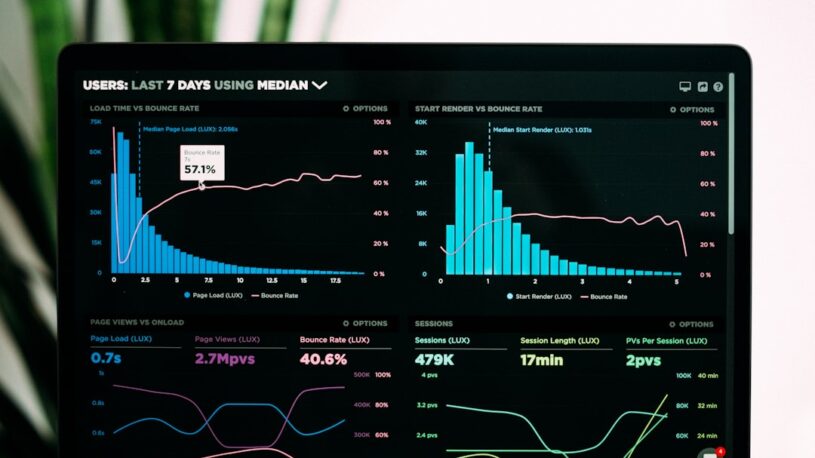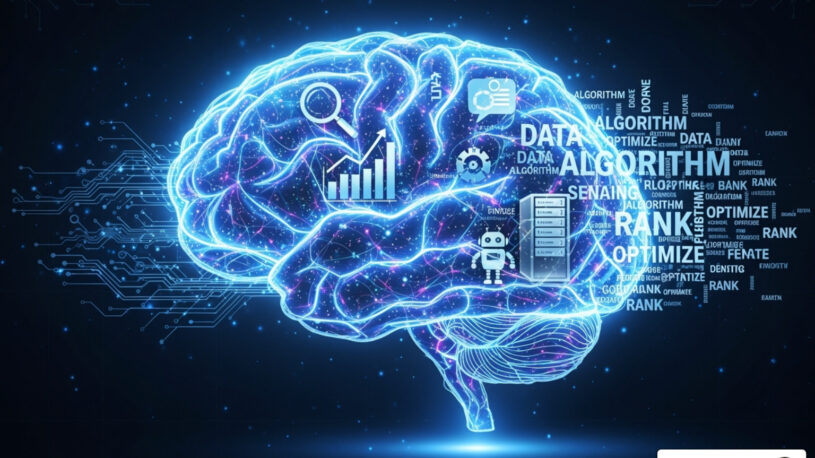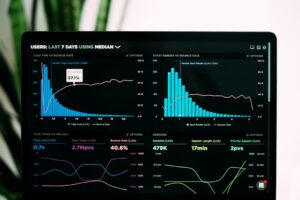

Data Privacy Meets AI: What Businesses Need to Know
Navigating AI and Data Protection in Today’s Business Landscape
AI and data protection are becoming inseparable concerns for businesses of all sizes. As artificial intelligence systems collect, process, and analyze unprecedented volumes of information, understanding the intersection of these technologies is crucial for maintaining customer trust and legal compliance.
“It cannot be a choice between the already routine benefits of AI and the protection of personal data: we must find practical ways of ensuring both.” – Centre for Information Policy Leadership
Key Elements of AI and Data Protection:
- Data Collection: AI requires large datasets to function properly, raising questions about consent and purpose
- Privacy Risks: AI can identify individuals even from anonymized data through pattern recognition
- Regulatory Frameworks: GDPR, EU AI Act, and US state laws set requirements for AI data handling
- Business Obligations: Organizations must implement privacy by design, conduct impact assessments, and ensure transparency
- Individual Rights: People have rights to access, rectify, and delete their data from AI systems
AI systems raise unique privacy challenges because they:
- Process massive amounts of personal information
- Can make inferences about sensitive attributes
- May repurpose data beyond its original collection purpose
- Often operate as “black boxes” with limited transparency
I’m Randy Bryan, founder of tekRESCUE and an AI and cybersecurity expert with over a decade of experience helping businesses steer AI and data protection challenges through strategic consulting and implementation of privacy-enhancing technologies.

Glossary for ai and data protection:
Why AI Changes the Privacy Game
The relationship between AI and data protection isn’t just evolving—it’s fundamentally changing how we think about privacy. While traditional data protection focused on securing specific data points and controlling access, AI introduces several game-changing factors that businesses simply can’t ignore.
The Scale Is Unprecedented
When ChatGPT’s training dataset exploded from 1.5 billion parameters in 2019 to a staggering 175 billion in 2020, it wasn’t just a technical milestone—it was a privacy watershed moment. This exponential growth shows just how ravenous modern AI systems are for data. For your business, this means you’re likely processing volumes of information that dwarf traditional systems.
Think of it this way: where traditional software might use hundreds of data points about your customers, modern AI might analyze millions—creating both incredible opportunities and serious privacy considerations.
Inference Makes “Anonymous” Data Identifiable
One of AI’s superpowers is finding hidden patterns and connections—and this is exactly what keeps privacy experts up at night. Through what’s called “inference attacks,” AI can deduce sensitive information you never explicitly collected.
Researchers have shown that AI systems can sometimes piece together someone’s identity by connecting dots across multiple sources or by tracking seemingly innocent data points over time. Even when you’ve done your due diligence to anonymize data, AI’s pattern-recognition abilities can sometimes reverse those protections.
As Jennifer King from Stanford’s Institute for Human-Centered AI puts it: “AI systems are so data-hungry and intransparent that we have even less control over what information about us is collected, what it is used for, and how we might correct or remove such personal information.”
Purpose Limitation Becomes Challenging
One cornerstone of good data protection is purpose limitation—only collecting data for specific, clearly stated reasons. But AI development often involves using information for multiple, evolving purposes that weren’t initially on the radar.
This creates a fundamental tension: the more flexible you are with how you use customer data, the more powerful your AI can become—but the further you drift from privacy best practices.
AI and Data Protection: Key Risk Areas
When implementing AI solutions in your business, several specific privacy hotspots deserve your attention:
1. Collection Without Adequate Consent
AI systems are data vacuums, often pulling information from everywhere—web scraping, third-party data brokers, and direct customer interactions. Without proper consent mechanisms, you risk serious regulatory trouble.
Just look at what happened in March 2023, when Italy temporarily banned ChatGPT over concerns about improper data collection. This wasn’t a slap on the wrist—it was regulators sending a clear message about consent issues.
2. Processing Sensitive Personal Data
Your AI might be processing special categories of data that require extra protection, including:
- Biometric information like facial features or voice patterns
- Health data that reveals medical conditions
- Political opinions that could lead to discrimination
- Religious beliefs that should remain private
- Sexual orientation that individuals may not wish to disclose
These categories receive heightened protection under most privacy regulations and require explicit consent and additional safeguards.
3. Automated Decision-Making and Profiling
Article 22 of the GDPR gives people the right not to be subject to purely automated decisions that significantly affect them. This directly impacts AI applications in loan approvals, hiring decisions, insurance pricing, and credit scoring.
To stay compliant, your business needs to provide human oversight, clear explanations, and ways for individuals to challenge automated decisions that affect them.
4. Discriminatory Outcomes
AI systems don’t start with biases—they learn them from historical data. If your training data contains past patterns of discrimination, your AI will likely perpetuate them, creating both legal and reputational risks.
Amazon learned this lesson the hard way when they had to scrap an AI recruiting tool that showed bias against women. The system had been trained on predominantly male resumes submitted over a 10-year period and learned to penalize resumes that included terms like “women’s” (as in “women’s chess club captain”).
Real-World Privacy Breaches Fueled by AI
The collision of AI and data protection has already produced several cautionary tales that highlight the unique risks involved:
Healthcare Data Breach (2021)
In 2021, an AI-driven healthcare organization suffered a breach that exposed the personal health records of millions. The AI system had centralized sensitive medical information to improve diagnoses, but this consolidation created a single, tempting target for attackers.
General Motors Data Sales
Until March 2024, General Motors was selling information about their customers’ driving habits—trip lengths, speeds, and other behaviors—to data brokers. This data eventually factored into insurance premium calculations. This practice shows how AI-analyzed behavioral data can be monetized in ways most consumers would never expect or explicitly approve.
Facial Recognition False Arrests
Biased facial recognition systems have led to multiple wrongful arrests. In at least six documented cases, all involving Black men, law enforcement relied on facial recognition AI that misidentified innocent individuals as suspects. These aren’t just technical errors—they’re life-altering events that demonstrate how algorithmic bias can have severe real-world consequences.
Voice Cloning for Fraud
In a particularly troubling trend, criminals have started using AI voice cloning to impersonate executives during real-time phone calls, successfully tricking employees into transferring funds. Just this March, hackers used an AI-generated deepfake of a CEO’s voice to commit fraud, showing how AI enables sophisticated social engineering attacks that bypass traditional security measures.
The intersection of AI and data protection isn’t just a technical challenge—it’s rapidly becoming one of the most important business considerations of our time. At tekRESCUE, we’ve seen how organizations that proactively address these concerns not only avoid regulatory headaches but build deeper customer trust and stronger brands.
Scientific research on AI privacy harms
Scientific research on responsible AI
Building Privacy-Ready AI Programs
Creating AI systems that respect privacy isn’t something you bolt on at the end—it needs to be woven into the fabric of your AI strategy from day one. At tekRESCUE, we’ve helped businesses across Texas find that sweet spot where innovation and privacy protection work hand-in-hand.
Privacy by Design in AI Systems
Privacy by Design isn’t just a buzzword—it’s a practical approach that builds privacy protections into every stage of AI development. When it comes to AI and data protection, here’s what this looks like in practice:
1. Data Minimization
The old approach of “collect everything just in case” creates unnecessary risk. Instead, focus on collecting only what you truly need for your AI application to function effectively.
A simple tip we share with our clients: Before gathering a single data point, define your specific success metrics first. Then ask, “Does this particular piece of information directly contribute to those outcomes?” If not, leave it out. Your risk exposure drops, and you’ll stay aligned with regulations that increasingly demand minimization.
2. Privacy-Enhancing Technologies (PETs)
The good news? There’s a growing toolkit of technologies specifically designed to improve privacy while enabling powerful AI:
| Technology | Description | Best Use Case |
|---|---|---|
| Differential Privacy | Adds statistical noise to data while preserving overall patterns | Public datasets, analytics |
| Federated Learning | Trains AI models across multiple devices without centralizing data | Mobile apps, healthcare |
| Homomorphic Encryption | Allows computation on encrypted data without decryption | Financial services, sensitive analytics |
| Synthetic Data | Creates artificial data with similar properties to real data | Testing, development |
| Secure Multi-Party Computation | Enables multiple parties to jointly compute without revealing inputs | Cross-organizational AI |
We’ve seen how these technologies can transform privacy outcomes when properly implemented.
3. Secure Model Training
The training phase is where many privacy issues begin, but it’s also where you can establish strong protections:
Training your AI models in separate environments from your production systems creates an important safety boundary. We also recommend implementing clear data provenance tracking—knowing exactly where each piece of training data came from and what permissions you have to use it.
As privacy expert Jennifer King aptly puts it: “In my view, when I’m browsing online, my data should not be collected unless or until I make some affirmative choice, like signing up for the service or creating an account.”
For our clients in San Marcos, Kyle, Dallas, San Antonio, and throughout Central Texas, these principles aren’t just nice-to-haves—they’re increasingly required as state regulations evolve.
4. Explainable AI
When your AI makes decisions that affect people, being able to explain how it reached those conclusions isn’t just good for privacy—it builds trust. For businesses using AI for process improvement, explainability helps employees understand and accept AI-driven changes rather than resist them.
Governance, Law & Compliance Toolkit
The regulatory landscape around AI and data protection is changing rapidly, with significant differences between regions. Here’s what Texas businesses need to know to stay ahead:
European Union Approach
The EU has taken the lead globally with two frameworks that are influencing regulations worldwide:
The General Data Protection Regulation (GDPR) established core principles like requiring a lawful basis for processing data and giving individuals rights to access and delete their information. With fines up to 4% of global annual revenue, it has teeth.
The newer EU AI Act creates a risk-based framework with four categories from “unacceptable” (banned outright) to “minimal risk” (light requirements). Social scoring systems are banned completely, while high-risk systems require human oversight.
The EU’s Digital Services Act also adds important restrictions, prohibiting targeted advertising to minors based on their personal data and banning ads targeted using sensitive characteristics like sexual orientation or political beliefs.
United States Approach
The U.S. has taken a more piecemeal approach, which creates challenges for businesses operating across state lines:
At the federal level, the 2023 Executive Order on AI directed agencies to assess risks, while the NIST AI Risk Management Framework provides voluntary standards. The FTC has signaled it will use existing authority to address AI harms, even without new legislation.
At the state level, Utah led the way with its 2024 AI and Policy Act, while Colorado, California, and Texas have enacted or proposed their own regulations. Each has its own emphasis on transparency, consent, and algorithmic accountability.
For our clients in Fort Worth, New Braunfels, and throughout Texas, navigating this complex landscape requires staying informed and adaptable. You can learn more about compliance and data privacy regulations on our compliance resources page.
Key Differences Between EU and US Approaches
| Aspect | EU Approach | US Approach |
|---|---|---|
| Regulatory Style | Comprehensive, prescriptive | Sectoral, principle-based |
| Default Permission | Opt-in (explicit consent) | Often opt-out |
| Enforcement | Centralized authorities | Multiple agencies, private litigation |
| Individual Rights | Extensive, harmonized | Varies by state and sector |
| Algorithmic Impact | Required assessments | Voluntary frameworks |
Best Practices Checklist for Businesses
Based on our work helping Texas businesses implement effective AI and data protection programs, here are the practices that make the biggest difference:
1. Adopt a Risk-First Mindset
Moving beyond checkbox compliance means thinking proactively about risks. Regular AI risk assessments help you identify potential issues before they become problems. Document your risk decisions and mitigations—this creates an audit trail that demonstrates due diligence if questions ever arise.
2. Implement Strong Data Governance
Data classification is the foundation of good governance—you need to know which data requires special handling. Clear ownership ensures someone is responsible for each dataset. Retention policies prevent the endless accumulation of data that creates unnecessary risk. And documenting AI training datasets helps you track what information went into your models.
3. Conduct Privacy Impact Assessments
Before deploying any AI system that handles personal data, take time to identify potential privacy risks and evaluate whether the processing is necessary and proportionate. Document your safeguards and review regularly as the system evolves. This isn’t just good practice—it’s increasingly required by law.
4. Ensure Transparency
People appreciate knowing when they’re interacting with AI systems. Use plain language to explain how data is collected and used. For automated decisions, provide meaningful information about the factors involved. And always create accessible ways for people to ask questions or raise concerns.
5. Establish Incident Response Procedures
Even the best protections can fail. Having an AI-specific incident response plan means you won’t be figuring things out during a crisis. Train your team on their responsibilities, establish notification procedures that comply with state laws, and learn from each incident to strengthen your defenses.
For more guidance on responding to data breaches, check our comprehensive data breach response checklist.
Conclusion: Balancing Innovation and Protection
The intersection of AI and data protection presents both challenges and opportunities for businesses. We’re living in a time where technology leaps forward daily, but our responsibility to protect personal data remains constant.
At tekRESCUE, we’ve seen how companies that thoughtfully implement privacy-conscious AI gain a genuine competitive edge. It’s not just about checking compliance boxes—it’s about building trust that translates into long-term customer loyalty. When people know you respect their data, they’re more likely to stick with you for the long haul.
Think about it: would you rather do business with a company that treats your personal information as a commodity to be exploited, or one that handles it with care and transparency? The answer is obvious, and your customers feel the same way.
For businesses throughout San Marcos, Kyle, Dallas, San Antonio, and Central Texas, navigating these complex issues doesn’t have to be overwhelming. Our team specializes in helping organizations like yours implement AI solutions that drive growth while maintaining robust data protection. We believe you shouldn’t have to choose between innovation and privacy—the most successful businesses excel at both.
The reality is that AI and data protection aren’t opposing forces. When implemented thoughtfully, privacy protections can actually improve AI systems by improving data quality, reducing bias, and building user trust. Our Strategic AI Consulting services help you find that sweet spot where technology and ethics align perfectly.
The businesses that will thrive in the coming years aren’t just the ones with the most advanced AI—they’re the ones who use AI responsibly. By starting with a strong foundation in privacy-by-design principles, your business can confidently accept these transformative technologies while staying on the right side of both regulations and customer expectations.

Ready to build privacy-ready AI systems for your business? Contact tekRESCUE today for a consultation on how we can help you steer the complex world of AI and data protection. We’re real people who understand both the technical and human sides of these challenges, and we’re here to help you steer them successfully.
Table of Contents









